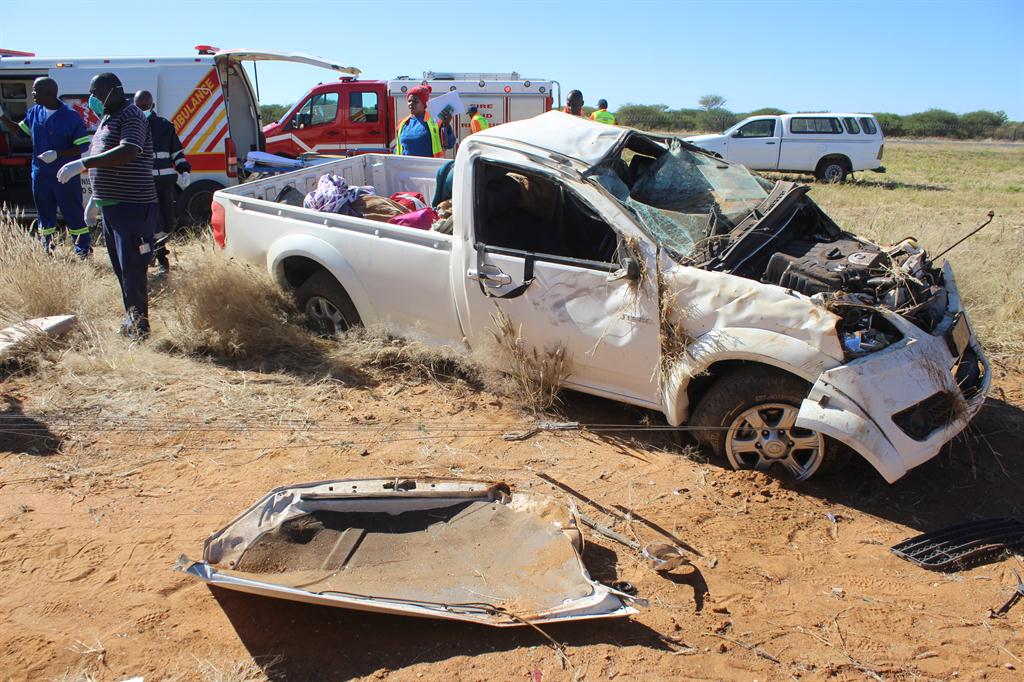Car crashes decline by 26%
JANA-MARI SMITH
WINDHOEK
Amid the Covid-19 pandemic Namibia's road accidents, injuries and deaths have dropped dramatically compared to the same period over the two previous years.
Both the number of crashes and injuries between 1 January and 16 August declined by around 26% this year compared to the same period last year.
The total number of deaths dropped by 27% compared to last year.
This year's fatalities are 91 less than last year and 101 less than the same time in 2018.
Up to 16 August, 245 people died in crashes, of which 184 were men and 60 were women.
In 2019, during the same period, 336 people died in car crashes and in 2018, 346 people died.
New statistics issued by the Motor Vehicle Accident Fund (MVAF) show that between January and 16 August this year, 1 685 crashes were reported, compared to 2 279 in 2019.
The number of injuries amounted to 3 646 in 2019 compared to a total of 2 694 this year.
Collisions remain the most common type of crash leading to injuries or deaths in Namibia. The total number of collisions declined by 11%, from 628 recorded in 2019 to 517 this year.
Accidents involving pedestrians totalled 413 so far this year.
Over the same time last year, pedestrian-related accidents totalled 601 and 605 in 2018.
Do better
A recently published paper titled 'An analysis of risk factors associated with road crash severities in Namibia', warns that road accidents remain “a leading cause of death and disabilities in Namibia and other developing countries.”
The paper notes that based on recent trends the World Health Organisation indicated that progress on achieving the Sustainable Development Goal of a 50% reduction in road traffic deaths by 2020 “remains far from sufficient” in developing countries.
The study recommends that “Namibian authorities undertake a comprehensive safety audit of their roadways to identify and institute countermeasures at crash-prone areas.”
The authors recommend work be done to ensure widespread and extensive road safety campaigns and that “this should be backed with increased and innovative strategies in the enforcement of traffic laws.”
Save Lives
Horst Haimstadt of the Private Sector Road Safety Forum (PSRSF) says the 12 radar speed cameras installed on the B1 and B2 highways, which remain inactive since 2017, could significantly boost road safety.
The 12 Radar Traffic Law Enforcement Cameras form part of a criminal investigation into more than N$12 million forked out by the Namibian police for the commissioning of a traffic contravention management system.
“Considering the potential impact of the cameras, we assume that more than 70% of all road crash injuries and fatalities are speed related. Therefore, the cameras could have potentially saved 1 355 lives since 2017,” Haimstadt explained.
He added that another major problem is that traffic officers lack sufficient vehicles.
“Currently very few traffic vehicles are in operation,” he said, adding that those that are in use are “in dubious roadworthy conditions.”
WINDHOEK
Amid the Covid-19 pandemic Namibia's road accidents, injuries and deaths have dropped dramatically compared to the same period over the two previous years.
Both the number of crashes and injuries between 1 January and 16 August declined by around 26% this year compared to the same period last year.
The total number of deaths dropped by 27% compared to last year.
This year's fatalities are 91 less than last year and 101 less than the same time in 2018.
Up to 16 August, 245 people died in crashes, of which 184 were men and 60 were women.
In 2019, during the same period, 336 people died in car crashes and in 2018, 346 people died.
New statistics issued by the Motor Vehicle Accident Fund (MVAF) show that between January and 16 August this year, 1 685 crashes were reported, compared to 2 279 in 2019.
The number of injuries amounted to 3 646 in 2019 compared to a total of 2 694 this year.
Collisions remain the most common type of crash leading to injuries or deaths in Namibia. The total number of collisions declined by 11%, from 628 recorded in 2019 to 517 this year.
Accidents involving pedestrians totalled 413 so far this year.
Over the same time last year, pedestrian-related accidents totalled 601 and 605 in 2018.
Do better
A recently published paper titled 'An analysis of risk factors associated with road crash severities in Namibia', warns that road accidents remain “a leading cause of death and disabilities in Namibia and other developing countries.”
The paper notes that based on recent trends the World Health Organisation indicated that progress on achieving the Sustainable Development Goal of a 50% reduction in road traffic deaths by 2020 “remains far from sufficient” in developing countries.
The study recommends that “Namibian authorities undertake a comprehensive safety audit of their roadways to identify and institute countermeasures at crash-prone areas.”
The authors recommend work be done to ensure widespread and extensive road safety campaigns and that “this should be backed with increased and innovative strategies in the enforcement of traffic laws.”
Save Lives
Horst Haimstadt of the Private Sector Road Safety Forum (PSRSF) says the 12 radar speed cameras installed on the B1 and B2 highways, which remain inactive since 2017, could significantly boost road safety.
The 12 Radar Traffic Law Enforcement Cameras form part of a criminal investigation into more than N$12 million forked out by the Namibian police for the commissioning of a traffic contravention management system.
“Considering the potential impact of the cameras, we assume that more than 70% of all road crash injuries and fatalities are speed related. Therefore, the cameras could have potentially saved 1 355 lives since 2017,” Haimstadt explained.
He added that another major problem is that traffic officers lack sufficient vehicles.
“Currently very few traffic vehicles are in operation,” he said, adding that those that are in use are “in dubious roadworthy conditions.”




Comments
Namibian Sun
No comments have been left on this article